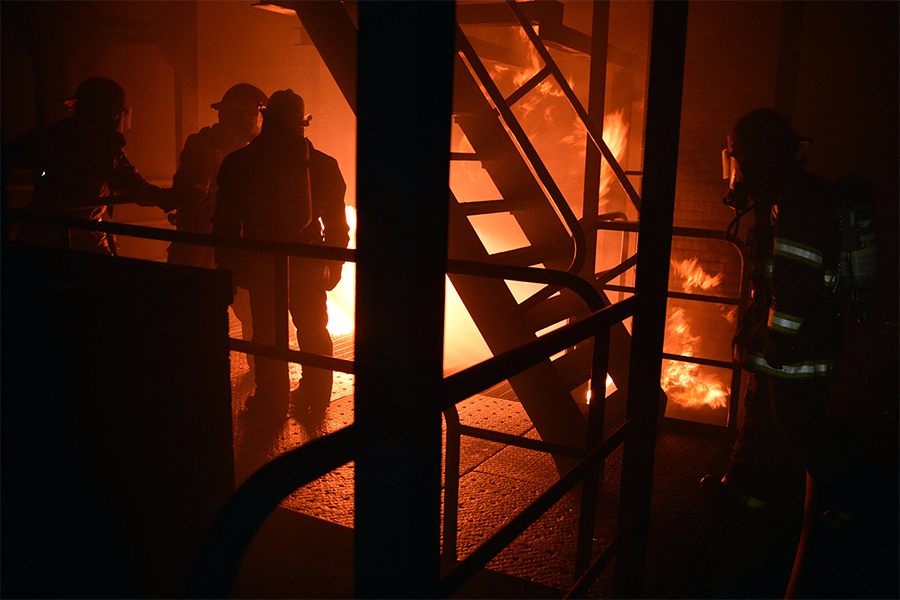
Tracking firefighters through heat and smoke
Tracking firefighters in burning buildings
What emergency responders need is a system that tracks firefighters inside blazing structures and that will operate without prior knowledge of a building’s floor plan.
ECE professors Anthony Rowe and Bruno Sinopoli, both pioneers in the area of indoor positioning for over a decade, are now advancing wireless broadband communications for use in extremely hostile environments such as burning buildings.
By combining three emerging technologies, the researchers are creating a failsafe system to reveal where firefighters are in a building along with their orientation, or the direction they are facing. Orientation tracking is critical so that firefighters working in zero-visibility situations can be directed (via radio communications) where to turn or when to enter or exit an area.
To guide their work, the researchers met with firefighters to learn their operational procedures. When firefighters arrive at a fire, they are dispatched in teams of two, and a safety chief checks in with the teams every 15 minutes by radio. If communications are lost, the safety chief sends in an intervention team to find the missing firefighters. This can become exceedingly dangerous.
On the technical front, the team analyzed various positioning
The researchers intend to outfit the air packs that firefighters wear with inexpensive Smart RF Tags to communicate their location to a small number of beacons strategically deployed around the fire. Signals will relay from the firefighters to the beacons. This data will then stream to the safety chief, who will monitor on a laptop what the firefighters are facing.
The outdoor beacons would be outfitted with a GPS receiver, radios, and sensors. These technologies will allow for communications deep within the building and help estimate a firefighter’s elevation. For example, are the firefighters on the 2nd or 10th floor? The firefighter’s wearable units, which would cost under $100, would be outfitted with similar technology, only the GPS would be replaced with an IMU to measure their movement and orientation over time.
The beacons situated at the point of ingress into the building will mark the firefighters’ starting location. Once inside the building, the firefighters’ air pack devices will send radio signals to convey where the teams are in relationship to the beacon and each other. Long-range radios will send data from inside the building to the beacons.
Developing a mobile indoor positioning system that operates on the fly is difficult enough without the added challenges of heat, smoke, and flames, but Rowe and Sinopoli have significant experience in this area. In 2015, their students won the infrastructure-based 2015 Microsoft Indoor Localization Competition. They have also deployed a sophisticated positioning system inside the David Lawrence Pittsburgh Convention Center, which spans 1.5 million square feet.
Building off these successes, the team has the confidence this new project will result in a prototype that will transition to the commercial market. Rowe and Sinopoli work closely with Bosch's Research and Technology Center in Pittsburgh, which has
The U.S. Commerce Department’s National Institute of Standards and Technology (NIST) awarded Rowe and Sinopoli a three-year grant for $782,000 in 2017 for this project.